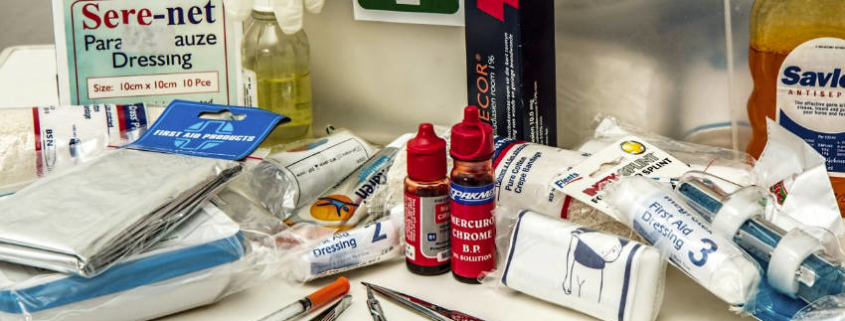First Aid
As professionals in the treatment of pain and restrictions in the body, our team at Osteopathy Cape Town are experienced in working with all types of injuries.Osteopathy helps to attain better performance and reduce probability of injury by removing restrictions within the body frame.Competitive sport can contribute to musculoskeletal imbalances, and Osteopathic treatment is designed to help you realign the body to its natural state.In addition to treatment, we offer the tips and techniques that will help alleviate minor aches and strains and offer guidance to minimise or avoid injury and muscle strain.
Common Injuries
Acute injuries may be caused by overuse, direct impact or the application of pressure greater than a body part – such as an ankle – can structurally withstand.Chronic injuries on the other hand are caused by overuse of muscle groups or joints, and poor techniques or structural abnormalities can exacerbate these conditions, leading to fractures and other complications.
The following common sports injuries and their symptoms include:
- Ankle sprain: Following a sprain, pain, swelling and stiffness may occur.
- Bruises: The yellow/purple colour indicates small bleeds into the skin caused by a blow to the affected area.
- Concussion: Caused by a blow to the head that can lead to temporary, reversible brain injury with loss of consciousness. Symptoms include headaches, dizziness and short-term memory loss.
- Cuts and abrasions: These are superficial wounds.
- Dehydration: This is caused by insufficient liquid intake – with the body losing more fluid than is being replenished.
- Groin strain: This can lead to pain and swelling.
- Hamstring strain: This can lead to pain, swelling and bruising.
- Knee joint injuries: This can lead to pain, swelling and stiffness, with ligaments and tendons being adversely affected.
- Stress fractures: These occur more frequently in the lower limbs as a result of repeated impact.
R.I.C.E – Sports Injuries & First Aid
The commonly accepted advice for the treatment of injuries within the first 24 to 48 hours includes 1. Rest 2. Ice 3. Compression 4. Elevation.
By following these steps, and consulting your Osteopath, recovery time following a sporting injury can be greatly reduced.
REST
The injured area should be rested for the first 24 hours. Full weight bearing e.g. on a sprained ankle should not be attempted. The body will gradually heal and accommodate more pressure on the affected area over time. For minor injuries, alternating been rest and light movement is important for recovery.
ICE
Following a traumatic injury where there is swelling, pain, redness and stiffness, it is important to reduce inflammation.The best way to do this is to use an ice pack or cold compress to the affected area. Ideally one should use a protective layer between the skin and ice pack – such as Vaseline or a towel – and apply for 10 minutes at a time.
COMPRESSION
For additional relief and to stabilise movement, a supportive compression can be applied by using a bandage or similar alternative. The pressure needs to be optimal – not too tight because this will cut off circulation.
ELEVATION
Elevation should be used within the first 48 hours after injury occurs. Lower limb injuries must be elevated above the height of the hip.By elevating the injured limb, fluid will drain away from the site of the injury, leading to decreased swelling and a reduction in pain symptoms. Upper limb injuries must be elevated above the level of the heart.
Other treatment options for minor injuries include:
HEAT
If a muscle is tight or has gone into a spasm, heat can be helpful. However it can create further damage if there are torn tissues and internal bleeding. So, when in doubt rather use ice.
MEDICATION
It is always advised to seek the help of a professional when it comes to medication. However, it is generally accepted that Paracetemol is an effective painkiller. Aspirin and Neurofen may aggravate pre-existing conditions such as asthma and digestive problems.
MOVEMENT
Movement is recommended under certain conditions, e.g. when there is back strain – this so that your body does not stiffen too much. Gentle movements should be interspersed with periods of rest.
POSTURE
When returning to work or around the house, it is important to alternate periods of sitting with movement. Ideally if you are sitting at a desk, behind a computer, you should get up and move around every half hour.
EMERGENCY MEASURES
More serious injuries require the intervention of emergency professionals. If the following symptoms occur, contact the nearest emergency service provider:
- Prolonged loss of consciousness
- Neck or spine injuries
- Broken bones
- Injuries to the head or face
- Eye injuries
- Abdominal injuries.
PREVENTION STRATEGIES
There are ways to minimise sports injuries, and these include the following simple techniques:
- Warm up thoroughly with slow, sustained stretches. After exercise, make sure to stretch again.
- Wear supportive and appropriate training shoes.
- Keep yourself hydrated and try to avoid exercising during the hottest times of day (between 11 am and 3pm).
- Gradually build up your level of fitness. Don’t overdo it in the beginning.
- Cross-train with other sports to ensure overall fitness and muscle strength.
- Allow enough recovery time between sessions.
For any sports related injuries or enquiries, please contact our professional team at Osteopathy Cape Town on 0217159999
View a list of common complains that Osteopathy can assist with
Discovery the benefits of Osteopathy
- What is Osteopathy?
- Adult health issues
- Babies and Children
- During and after pregnancy
- Common Complaints
- Testimonials
- Sports Injuries
- Genral Osteopathy FAQs
- The Science & Reasearch



